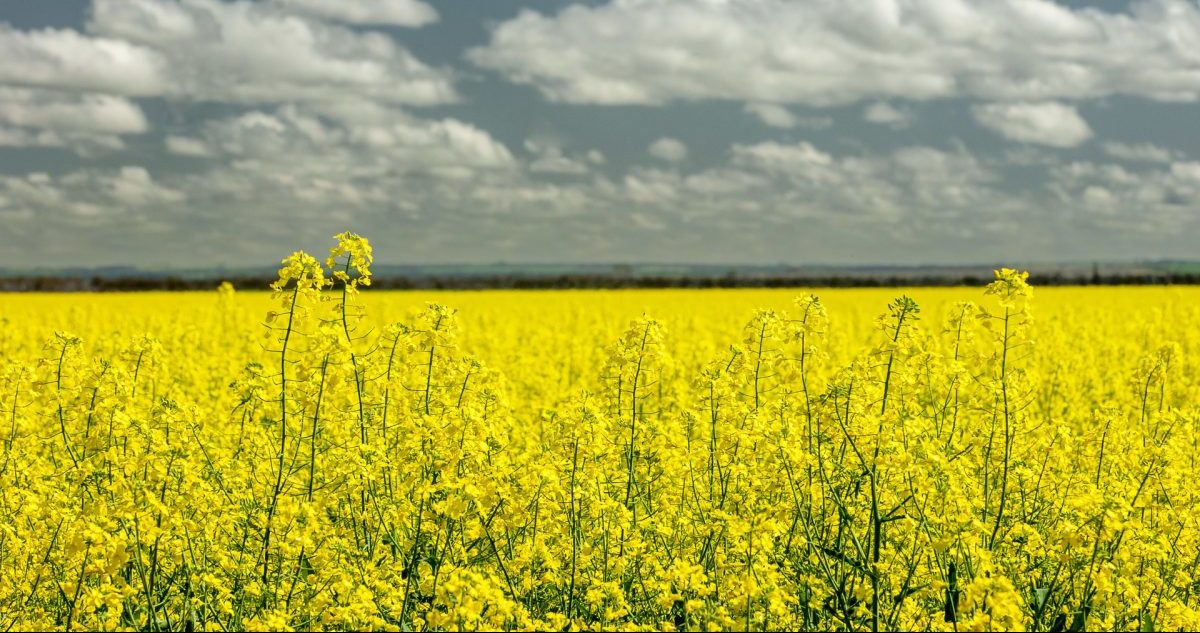
WA produced a record crop which included its biggest eve canola last year. Photo: Elders Merredin
WESTERN Australia’s total grain production from the 2022-23 harvest has weighed in at just over 26 million tonnes, 8pc higher than the 2021 record, according to the February Grain Industry Association of Western Australian Crop Report released today.
This result is 31pc higher than the 2016 tonnage, the previous record year up until 2021.
WA has produced just over 50Mt of grain in the last two years, compared to about 60Mt in the previous four years.
This includes the previous record production tonnages of 18.2Mt in 2016 and 17.9Mt in 2018.
Outlook for 2023
In its report, GIWA said as a result of two good years in a row, many growers’ balance sheets were strong with low levels of debt, good cash reserves and recent capital upgrades.
Alongside this, fixed costs have increased substantially, and many growers are now locked into higher production cost structures.
Even though variable costs have come down a little, the pressure is now on for many to exceed five-year average paddock yield levels to break even.
GIWA said the question growers and their advisors have been pondering is: What to do in 2023?
Sub-soil moisture levels are good for central and southern regions of the state, although the recent climate prognosis is shifting rapidly back to a more normal scenario of less rainfall for the 2023 growing season.
For many growers in the lower-rainfall regions, there will be a drop in area cropped.
This will be largely dependent on the timing of the break to the season.
In higher-rainfall areas, there be will more of an enterprise shift rather than a significant change in area cropped.
There may even be a slight increase in cropped area due to the current low sheep prices.
Barley is clearly out of favour due to its relative grain-yield performance compared to wheat recently, and the high cost of controlling diseases in the higher-rainfall regions.
Wheat has outperformed barley in yield for the last few years’ due to the mild slow finishes making better use of available rainfall, and probably less frost taking the top off the average yields that occur in most years.
Canola area could see a swing back to well under the record 2 million hectares grown in 2022 if there is no autumn rain and a late break.
Lupin area is under more pressure now the price of bagged nitrogen has come back a little and there are significant volumes of lupins being carried over on farms.
Oats are still a minor crop, accounting for less than 3pc of the cropped area in 2022.
Even though the outlook for oaten hay is a little subdued, recent advances in milling grain marketing will probably see the area creep up a bit.
Pulses are having a tough time on the price front, and while everyone would like to grow more, the dollars simply do not stack up for many growers.
In saying that, cereals following lupins, legume pasture and pulses in 2022 returned up to 2pc higher protein at higher grain yields and less applied nitrogen than cereal on cereal paddocks.

Summary of season
The total tonnes produced by WA growers in 2022 equates to about two years of average production 10 years ago.
GIWA said this was “an incredible result and one that may not be repeated for a while”.
The exceptional result was due to a near record area sown of 8.9Mha.
Although it was slightly down on 2021, the area was 7pc more than 2020 and 16pc more than previous record years.
The season started with good sub-soil moisture across the state, an early start to planting, and warm growing conditions to set up very high yield potential for all crops, followed by very mild conditions and very little frost during grain fill.
This combination of factors rarely occurs over such a wide area of the state.
Highlights from 2022, apart from the exceptional total production, were the very good average yields of canola across the state.
Producing 4.3Mt from just under 2.2Mha is incredible when one considers at least a quarter of that production was in the low-rainfall regions, with many growers having grown nil or little canola recently.
WA planted 51pc of the nation’s canola area and grew 56pc of the total tonnes.
Lupins were also exceptional, with grain yields of 4t/ha recorded for the first time.
Lupin grain yields have been creeping up in recent times; while the price per tonne is low, growers are sticking with them as they are the only serious legume option other than pasture.
Interestingly, lupins are now viewed as more of a low cost “light land fallow crop” rather than a traditional break crop.
While growers are persevering with lupins for the break crop benefit, they are growing them “on the cheap”, happy to break even for their future benefit to the more profitable following crops, similar to heavy land fallow.
Wheat grain yields were also a highlight, and this has continued to fuel the recent move out of barley for wheat across the state.
It will be interesting to see if this continues if we have a run of tight finishes in coming seasons.
To read the full GIWA February Crop report, including zone-specific information click here.
Source: GIWA

HAVE YOUR SAY